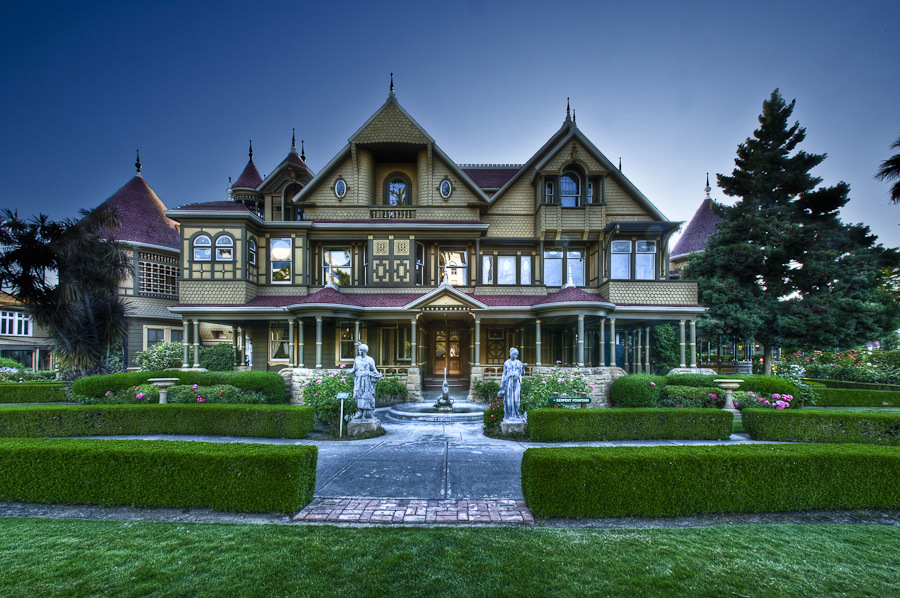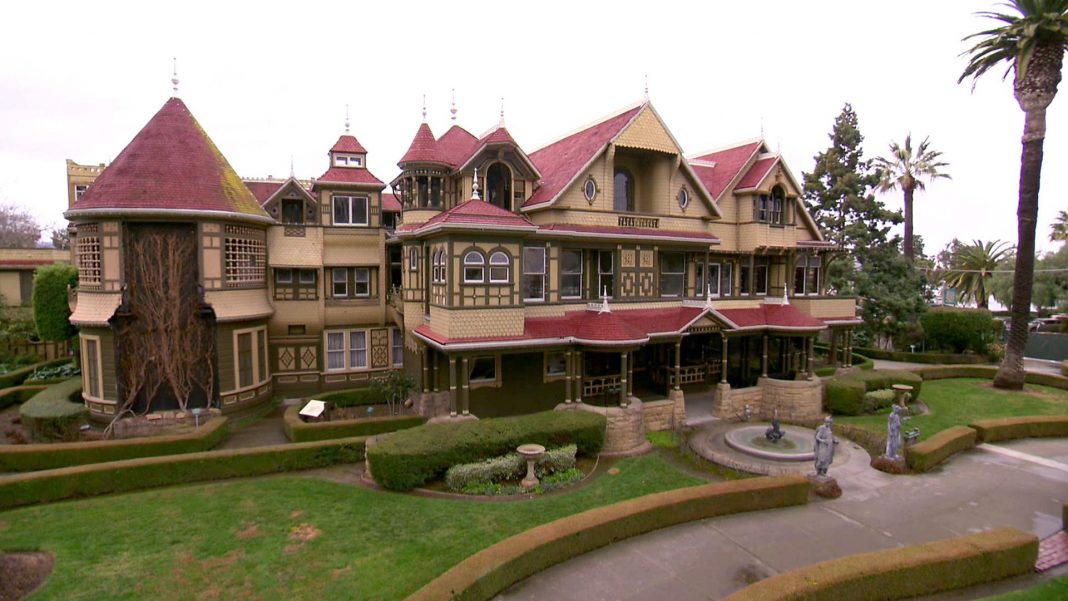Table Of Content

For the next 38 years, reports claim, the property would be constantly under construction, 24 hours a day, 7 days a week. Sarah designed all of the additions on her own despite having no formal training. Construction ended only upon her death in the mansion in September 1922, leaving it incomplete and her plans unfinished. As the widow of William Winchester, whose family's eponymous company, The Winchester Repeating Arms Company, Sarah came into a $20 million inheritance along with 50 percent ownership in the firearms business when William died in 1881. That fortune enabled her to transform the humble ranch house into a massive mansion on hundreds of acres, but it also fueled rumors that Sarah built the home to escape the spirits of those killed by the Winchester rifle.
The Winchester Mystery House to stage a 13-hour tour marathon - NBC Los Angeles
The Winchester Mystery House to stage a 13-hour tour marathon.
Posted: Tue, 13 Jun 2023 07:00:00 GMT [source]
Amazing Historical Facts, Figures and Fascinating Finds
Since her death, little has been uncovered about Sarah Winchester and the reasoning behind her obsession with building the Winchester Mystery House. She gave no interviews, left behind no journals, and had no family willing to speak about her. These spirits are reportedly what called Winchester to make so many illogical additions to the home. Newly in possession of a massive fortune and struggling with the loss of her husband and daughter, she sought the advice of a medium.

The Oddities of the Winchester Mystery House
Guests who purchase this tour during the Estate’s closure will receive one complimentary pass for a future tour when it reopens. Building upon the foundations of our classic mansion tour, Explore More promises to reveal new dimensions of the mansion’s history, architecture, and intrigue. As we delve into the decades-long construction saga spanning 36 years, guests will witness the evolution of Winchester Mystery House from its humble beginnings to its current iconic status. From Sarah Winchester’s initial visit to San Jose to the present day, every step of the journey unveils a new chapter in the mansion’s rich tapestry of history. With additional unique architectural elements and captivating stories to share, Explore More promises a deeper look into our story like never before. Her father-in-law Oliver Winchester, manufacturer of the famous repeater rifle, died in 1880, and her husband, Will, also in the family gun business, died a year later.
earthquake
Its ballroom features two meticulously crafted Tiffany art-glass windows. The windows have stained glass panels with lines from Shakespeare. One reads, “These same thoughts people this little world.” It’s from the prison soliloquy in Shakespeare’s Richard II.
It's a family-friendly science and technology museum with hands-on exhibits, great for young children and all ages. Why did Sarah Winchester continue to make changes until her death? Some say that she believed she would die as soon as the house was declared complete.

Seasonal Encounters and Other Special Tours
Winchester rifles were the standard-issue rifles of the elite, frontier-prowling Texas Rangers, as the Texas Ranger Hall of Fame and Museum shows. A quick scroll through The Winchester Arms Collectors Association website reveals a ton of Winchester models and makes, many of which hail from the late 1800s. To this day, Winchester House is a destination for believers who hope to have a paranormal encounter of their own. A popular spot for such activity is the corridors of the third floor, where tour guides have claimed to hear footsteps and disembodied voices whisper their names.
"I think Sarah was trying to repeat that experience by doing something they both loved," Boehme told the Los Angeles Times. She also suspects that Sarah was just an ardent—albeit eccentric—philanthropist who used her family fortune to purposefully employ the San Jose community. "She had a social conscience and she did try to give back," Boehme offered, noting the hospital Sarah built in her husband's name. The house took some 38 years to build, supposedly inspired by the advice of a psychic, and construction went ahead without an architect or plans. The result is a haphazard, labyrinth-like structure full of odd features, such as corridors to nowhere and doors that don’t open. Instead of taking you to another floor, they lead right into the ceiling.
Sarah Winchester as Innovator
Others say she created a labyrinth to confuse and evade the spirits that followed her. Whatever you believe the reason is, the Winchester Mystery House is sure to stay in your mind long after your visit. When Sarah Winchester’s husband, William Wirt Winchester, died in 1881, she became one of the wealthiest women in the world. Those looking to explore even more of the beautiful but bizarre home of Sarah Winchester should book the Mansion Tour and spend more time in the gardens and gift shop.
But when trying to get a room count, the new owners kept coming up with different numbers. After five years of renovations, they estimated the number of rooms to be about 160, which is the number most often quoted today. An alternate theory on the Winchester House's perplexing design declares that Sarah was creating a puzzle full of encryptions inspired by the work of English philosopher Francis Bacon. There's speculation that clues to the house's true meaning are hidden in the ballroom, the Shakespeare windows, and the iron gates. This theory suggests that Sarah was a member of a mystic society like the Rosicrucians, or a secret society like the Freemasons—or possibly both. The house has been owned by the same family since 1923 and has remained open to the public almost continuously since then.
These were constructed to help Sarah Wincheter be more mobile through her house due to the great pain she suffered from with arthritis. Less than 6 months after Sarah died, the house was bought, leased to a couple called John and Mayme Brown and opened up to tourists. The house is owned by a company called Winchester Investments LLC today, which represents the interests of the Browns’ descendants. It’s unclear why the number 13 was deemed so important by Sarah, but it recurs repeatedly throughout the construction and design of the house. There are 13-paned windows, 13-panelled ceilings and 13-step flights of stairs. Since 1923, many guests and employees have experienced strange phenomena while inside Sarah Winchester’s beautiful mansion.
The Grand Ballroom in the Winchester Mystery House is the most expensive room in the house. The construction cost more than $9,000 when it was built in the late 1800’s, about 3.5 times the cost of an entire home during that time. Not only is this one of the most well-preserved rooms in the house, it also inspired the ballroom design at Disney’s Haunted Mansion ride. The Winchester Mystery House earned landmark status on August 7, 1974. The fascinating mansion is still owned by the family (families?) who purchased it from the Winchester estate in 1922 for $150,000—however, their identity is another Winchester House mystery. But thanks to them, tourists can now explore 110 of the 160-some rooms Sarah dreamed up.
The story took the rumors about the hauntings in the house and ran with them, depicting a woman crazed by the ghosts of Winchester rifles. Filming for the movie took place at the actual Winchester Mystery House. A year later, rooms that were never opened to the public were put on display, including sections of the home that had remained unfinished at the time of her death.
A 1900 postcard of the place shows a tower that was later toppled by the natural disaster. That tower—plus several other rooms destroyed in the disaster—were never rebuilt, but cordoned off. As for Sarah, she was safe but stuck in the Daisy Bedroom, named for the floral motif in its windows. She had to be dug out by her staff, as its entrance was blocked off by rubble.

No comments:
Post a Comment